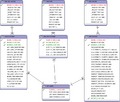Difference between revisions of "2013 Project Week:QualityAssuranceModule"
From NAMIC Wiki
(Created page with '__NOTOC__ <gallery> Image:PW-SLC2013.png|Projects List Image:ScarSeg_EM.png| Scar tissue identification. </gallery> ==Key Investigators=…') |
|||
| Line 2: | Line 2: | ||
<gallery> | <gallery> | ||
Image:PW-SLC2013.png|[[2013_Winter_Project_Week#Projects|Projects List]] | Image:PW-SLC2013.png|[[2013_Winter_Project_Week#Projects|Projects List]] | ||
| − | Image: | + | Image:QAModule_derived.png| Derived Images QA module |
| + | Image:QAModule_rawDWI.png| Raw DWI QA module | ||
| + | Image:QAModule_postDWI.png| Processed DWI QA module | ||
| + | Image:QAModule_db.png| PostgresSQL database | ||
</gallery> | </gallery> | ||
==Key Investigators== | ==Key Investigators== | ||
| − | * | + | * Dave Welch, UIowa SENAP |
| − | * | + | * Hans Johnson, UIowa SENAP |
| − | |||
==Project Description== | ==Project Description== | ||
| Line 16: | Line 18: | ||
<div style="width: 27%; float: left; padding-right: 3%;"> | <div style="width: 27%; float: left; padding-right: 3%;"> | ||
<h3>Objective</h3> | <h3>Objective</h3> | ||
| − | * We | + | * We have created several Python-based image quality assurance modules for use by research technicians in our lab. Our goals with this project are: |
| − | + | # Refactoring to enable more flexible extension of the modules | |
| + | # Implementation of several user requests, such as hotkeys | ||
| + | # Improved interaction with our database for increased robustness | ||
| + | # Expanded testing and logging | ||
| + | # Documentation and examples on Slicer Wiki | ||
</div> | </div> | ||
<div style="width: 27%; float: left; padding-right: 3%;"> | <div style="width: 27%; float: left; padding-right: 3%;"> | ||
<h3>Approach, Plan</h3> | <h3>Approach, Plan</h3> | ||
| − | * | + | * Implement a test database on the fly |
| − | * | + | * Expand test code coverage (doctests, unittests via nose) |
| − | * | + | * Add logging |
| + | * Decouple module code from DB interaction | ||
| + | * Refactor and consolidate code from our three modules | ||
| + | * Improve GUI and MRML interactions | ||
</div> | </div> | ||
<div style="width: 27%; float: left; padding-right: 3%;"> | <div style="width: 27%; float: left; padding-right: 3%;"> | ||
Revision as of 15:38, 7 January 2013
Home < 2013 Project Week:QualityAssuranceModuleKey Investigators
- Dave Welch, UIowa SENAP
- Hans Johnson, UIowa SENAP
Project Description
Objective
- We have created several Python-based image quality assurance modules for use by research technicians in our lab. Our goals with this project are:
- Refactoring to enable more flexible extension of the modules
- Implementation of several user requests, such as hotkeys
- Improved interaction with our database for increased robustness
- Expanded testing and logging
- Documentation and examples on Slicer Wiki
Approach, Plan
- Implement a test database on the fly
- Expand test code coverage (doctests, unittests via nose)
- Add logging
- Decouple module code from DB interaction
- Refactor and consolidate code from our three modules
- Improve GUI and MRML interactions




